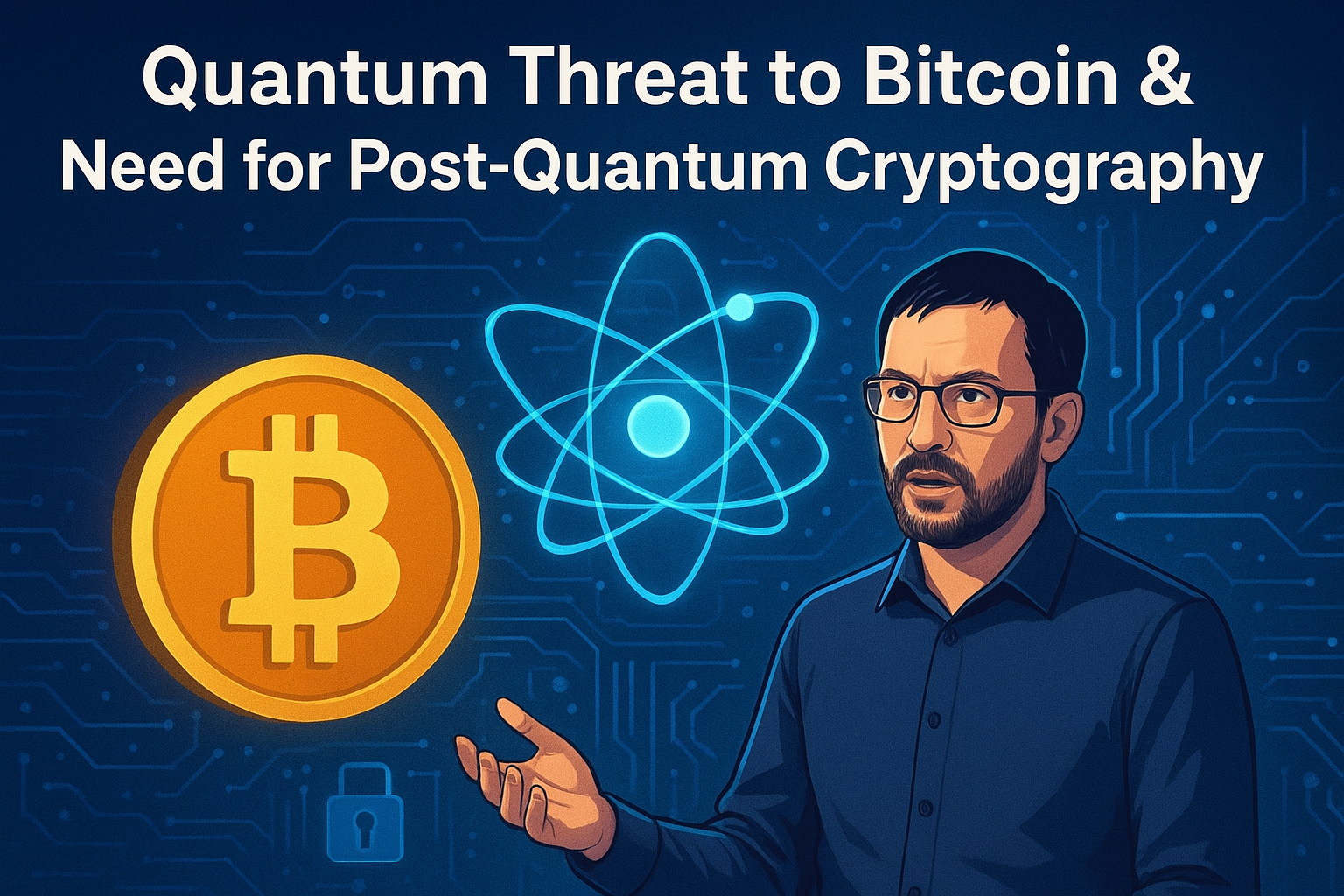The cryptography securing Bitcoin and most other blockchains has, for over a decade, been considered virtually unbreakable by classical computers. However, a new technological frontier is emerging that could undermine this foundation far sooner than many expect: quantum computing.
At the All-In Summit 2025, Solana co-founder Anatoly Yakovenko issued a stark warning. Advances in quantum computing, fueled by breakthroughs in artificial intelligence and specialized hardware, could render today’s digital signature schemes obsolete in as little as five years. This timeline is far shorter than the decades once predicted in academic papers and cryptographic circles.
Why Bitcoin’s Current Signatures Are at Risk
Bitcoin, like most cryptocurrencies, relies on the Elliptic Curve Digital Signature Algorithm (ECDSA) to verify transactions. Each user holds a private key, signs a transaction, and the network uses the corresponding public key to confirm authenticity. The security of ECDSA rests on the infeasibility of solving certain mathematical problems — tasks that would take classical computers trillions of years.
Quantum computers, however, operate on qubits and can exploit quantum parallelism to solve these problems exponentially faster. Shor’s algorithm, for instance, can theoretically break elliptic curve cryptography by factoring large numbers and computing discrete logarithms far more efficiently than any classical machine. Once quantum processors reach sufficient scale and error correction, private keys could be derived from public keys, exposing user funds.
The AI Acceleration Factor
Yakovenko highlighted a critical, often overlooked aspect: AI-assisted quantum research. Machine learning models are already helping scientists discover better error-correction codes, optimize quantum circuits, and design new qubit architectures. This feedback loop means the quantum timeline could compress dramatically. What once looked like a 20- or 30-year horizon might now be a single-digit countdown.
Migration via Hard Fork: A Call to Action
Yakovenko urged Bitcoin’s core developers to begin migrating toward quantum-resistant signatures through a hard fork. Such a transition would be one of the most consequential upgrades in Bitcoin’s history, on par with or exceeding the SegWit or Taproot upgrades.
Post-quantum cryptography (PQC) offers candidate algorithms that remain secure even against quantum attacks. The U.S. National Institute of Standards and Technology (NIST) is in the final stages of standardizing several PQC schemes, including lattice-based, hash-based, and multivariate-based signatures. Integrating these into Bitcoin would require significant technical and community coordination but is increasingly seen as unavoidable.
What Quantum-Resistant Bitcoin Could Look Like
A quantum-safe Bitcoin network might employ one of the following approaches:
-
Lattice-based signatures such as CRYSTALS-Dilithium, which NIST has selected for standardization.
-
Hash-based signatures like SPHINCS+, which offer conservative security at the cost of larger signature sizes.
-
Hybrid schemes that combine classical and quantum-resistant algorithms during a transition period.
Any upgrade would need to balance security, transaction size, verification speed, and backward compatibility — all while maintaining Bitcoin’s decentralized governance model.
Broader Implications for the Crypto Ecosystem
Bitcoin is not alone in facing this threat. Every blockchain using ECDSA or similar algorithms — including Ethereum, Solana, and countless others — must grapple with the same risk. The earliest adopters of PQC may gain a reputational advantage, signaling security and forward-thinking design to institutional investors. Conversely, networks that delay may expose their users to catastrophic losses if a “quantum day” arrives suddenly.
Preparing for a Quantum-Enabled Future
Yakovenko’s warning is both technical and strategic. Cryptography has always evolved in cycles — from DES to AES, from SHA-1 to SHA-256. The difference now is the speed at which disruption could occur and the systemic scale of crypto assets at risk. In 2025, the combined market capitalization of digital assets is in the trillions. A successful quantum attack on Bitcoin would shake not only crypto markets but the entire financial system integrating with them.
For Bitcoin and the broader crypto community, the time to act is now. Developers, miners, wallet providers, and regulators must collaborate on a roadmap for quantum migration. Education of users will also be crucial, as key-management practices will change.
Quantum computing is no longer a distant, theoretical threat. With AI accelerating its progress, the countdown to quantum-vulnerable cryptography may be measured in years, not decades. Yakovenko’s call for Bitcoin to adopt post-quantum signatures through a hard fork is a wake-up call.
If Bitcoin can lead this migration, it will reaffirm its status as the most resilient, future-proof digital asset. If it hesitates, the consequences could be irreversible. As the world stands on the cusp of a quantum revolution, one thing is clear: post-quantum cryptography is not optional — it’s inevitable.




